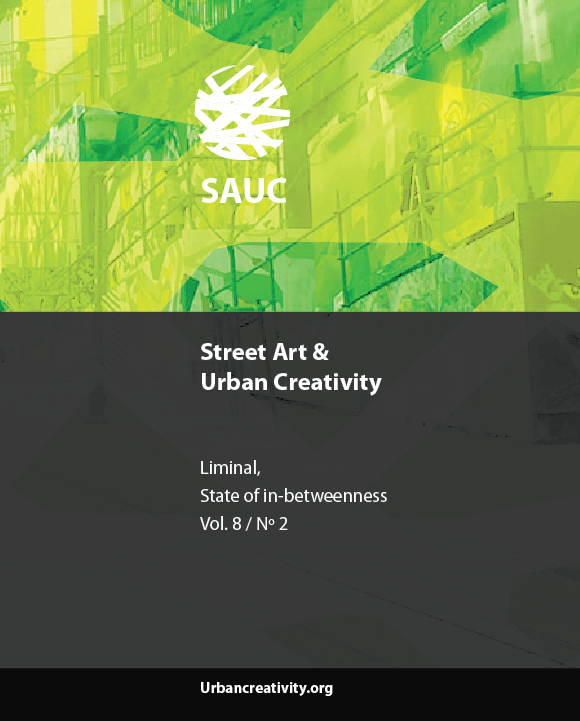Arabic Calligraffiti: A Political Liminal Practice in Street Art's Visual Scene
DOI:
https://doi.org/10.25765/sauc.v8i2.606Keywords:
Visual scene; Arabic calligraffiti; political liminal practice; urban art; Arab and Western worlds; visibilityAbstract
Arabic calligraffiti, a form of urban art, has spread in both Arab and Western cities, including Montreal, Paris and cities in Tunisia and elsewhere in the Arabic world. Its visibility underlines different tensions and highlights various conflicts and power relations, such as Arab-Western tensions in the visual culture of Western cities, tensions around the religious role of Islamic calligraphy in Arab cities, tensions around urban art in all cities, and tensions around the various digital spaces where these works are disseminated (Zahar, 2018). Arabic calligraffiti has its origins in Islamic calligraphy, modern Arabic calligraphy and the globalized graffiti movement. It is situated at the problematic meeting of the Arab and Western worlds and raises the question of possible interpenetrations and/or tensions (physical and digital) between those two cultural ensembles. Arabic calligraffiti can be considered in many ways as a liminal practice. In this article, we will illustrate the different facets of this liminal practice.
Downloads
Global Statistics ℹ️
|
234
Views
|
151
Downloads
|
|
385
Total
|
|
Downloads
Published
How to Cite
Issue
Section
License
Those authors who publish in this journal accept the following terms:
-
Authors retain copyright.
-
Authors transfer to the journal the right of first publication. The journal also owns the publishing rights.
-
All published contents are governed by an Attribution-NoDerivatives 4.0 International License.
Access the informative version and legal text of the license. By virtue of this, third parties are allowed to use what is published as long as they mention the authorship of the work and the first publication in this journal. If you transform the material, you may not distribute the modified work. -
Authors may make other independent and additional contractual arrangements for non-exclusive distribution of the version of the article published in this journal (e.g., inclusion in an institutional repository or publication in a book) as long as they clearly indicate that the work was first published in this journal.
- Authors are allowed and recommended to publish their work on the Internet (for example on institutional and personal websites), following the publication of, and referencing the journal, as this could lead to constructive exchanges and a more extensive and quick circulation of published works (see The Effect of Open Access).













